The Phoenix metropolitan area is the urban hotspot of Arizona. With no natural boundaries to stop the city’s growth, new neighborhoods seem to pop up every day while the historic districts are getting a facelift, becoming once again desirable places to live and play. These are the best neighborhoods to visit in Phoenix right now, from hip new areas like High Street to the quaint, rural feel of Agritopia and historic districts in the center of town.
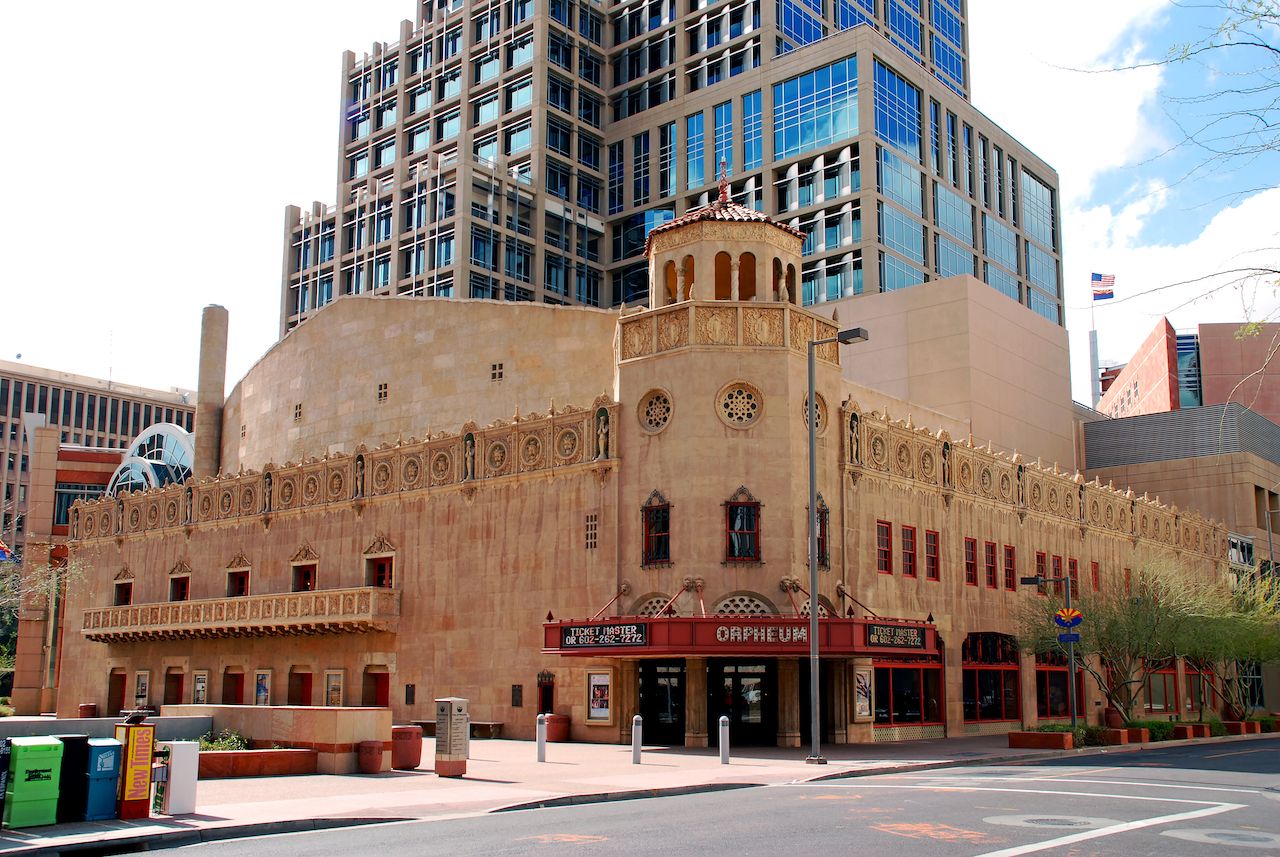
Photo: Paul McKinnon/Shutterstock
Downtown Phoenix — Downtown Phoenix makes up the urban center and heart of the city. There are vibrant murals, art galleries, museums, theaters, and award-winning restaurants everywhere you look. The Heard Museum offers a glimpse into the native cultures of the Southwest and beyond, while the nearby Art Museum showcases American, Asian, European, Latin American, Western American, modern, and contemporary art. Families with children will enjoy spending a few hours at the Children’s Museum of Phoenix, and those who wish to see a show have a few choices of venues between the Herberger Theater Center, historic Orpheum Theatre, Arizona Opera House, or Phoenix Theatre. The area doesn’t lack dining choices, with anything from the award-winning Pizzeria Bianco in Heritage Square to the casual but elegant 1130 The Restaurant in the Arizona Center or the Thai Basil Restaurant.
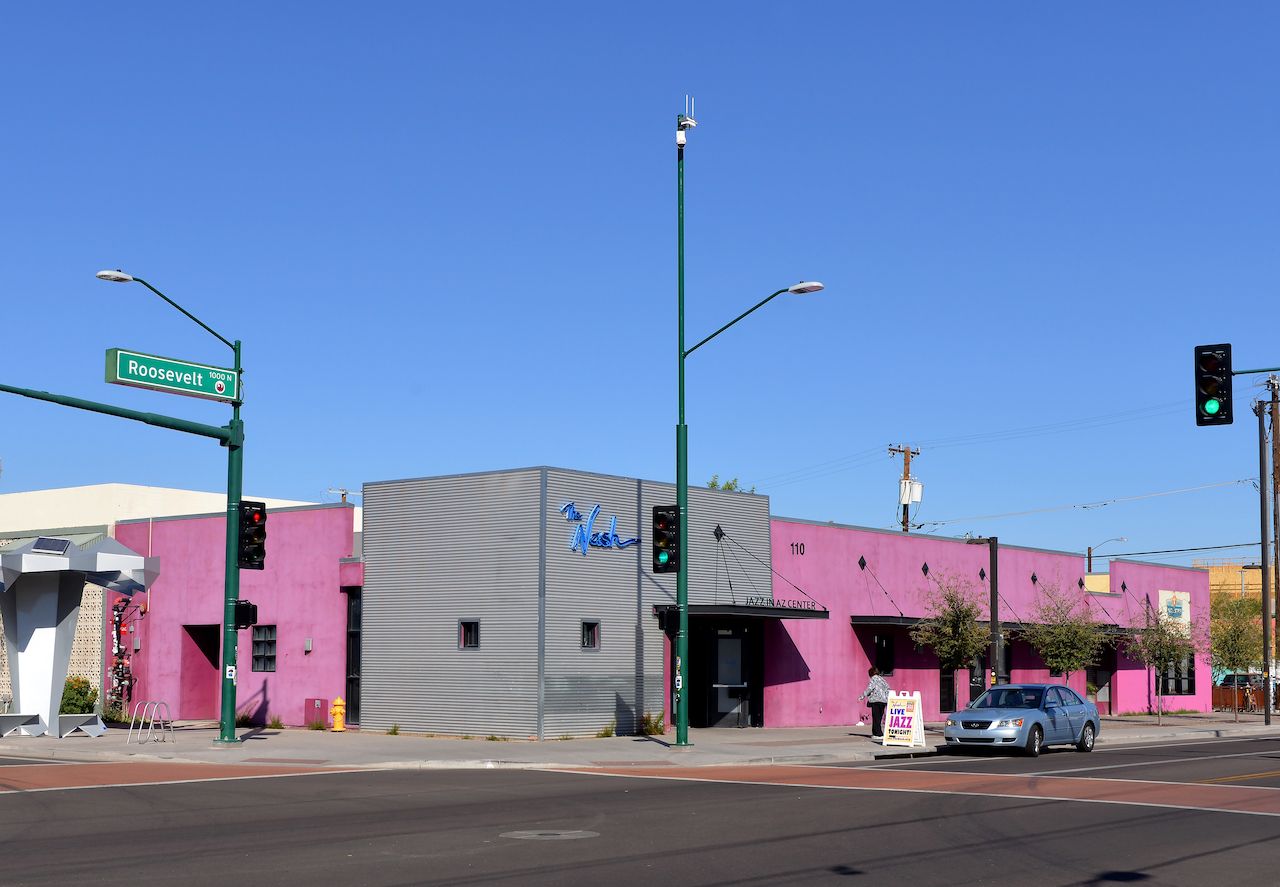
Photo: Paul McKinnon/Shutterstock
Roosevelt District — Roosevelt District offers a unique glimpse of Phoenix life, both past and present. From the glamorous beginning of being the first streetcar neighborhood in town to a period of being rundown and ready to be demolished, this downtown neighborhood is enjoying a comeback. Art lovers can enjoy a visit to the historic Bragg’s Pie Factory art studios and galleries. For outdoor fun, the Margaret T. Hance Park has picnic areas, a large playground, and walking paths. For great dining experience, head over to Blue Fin, one of the top Japanese restaurants in town, or Durant’s for a traditional steakhouse meal.

Photo: PHXWD
Warehouse District — In the shadow of the Arizona Diamondbacks’ Chase Field, the historic Warehouse District is experiencing a new beginning. Named after the warehouses storing goods coming into town by railroad, the area was the first Chinatown in Old Phoenix. Today, many of the warehouse buildings still stand, repurposed into cultural venues, museums, or restaurants. The Bentley Gallery exhibits contemporary paintings and sculptures while the Carver Museum explores the African American heritage in Phoenix. For live music, head over to Last Exit Live then dine at The Duce, one of the most interesting restaurant/jazz clubs in town, serving old-fashioned favorites with a twist, like spaghetti and meatballs in a jar or cheeseburger sliders, all made from scratch.
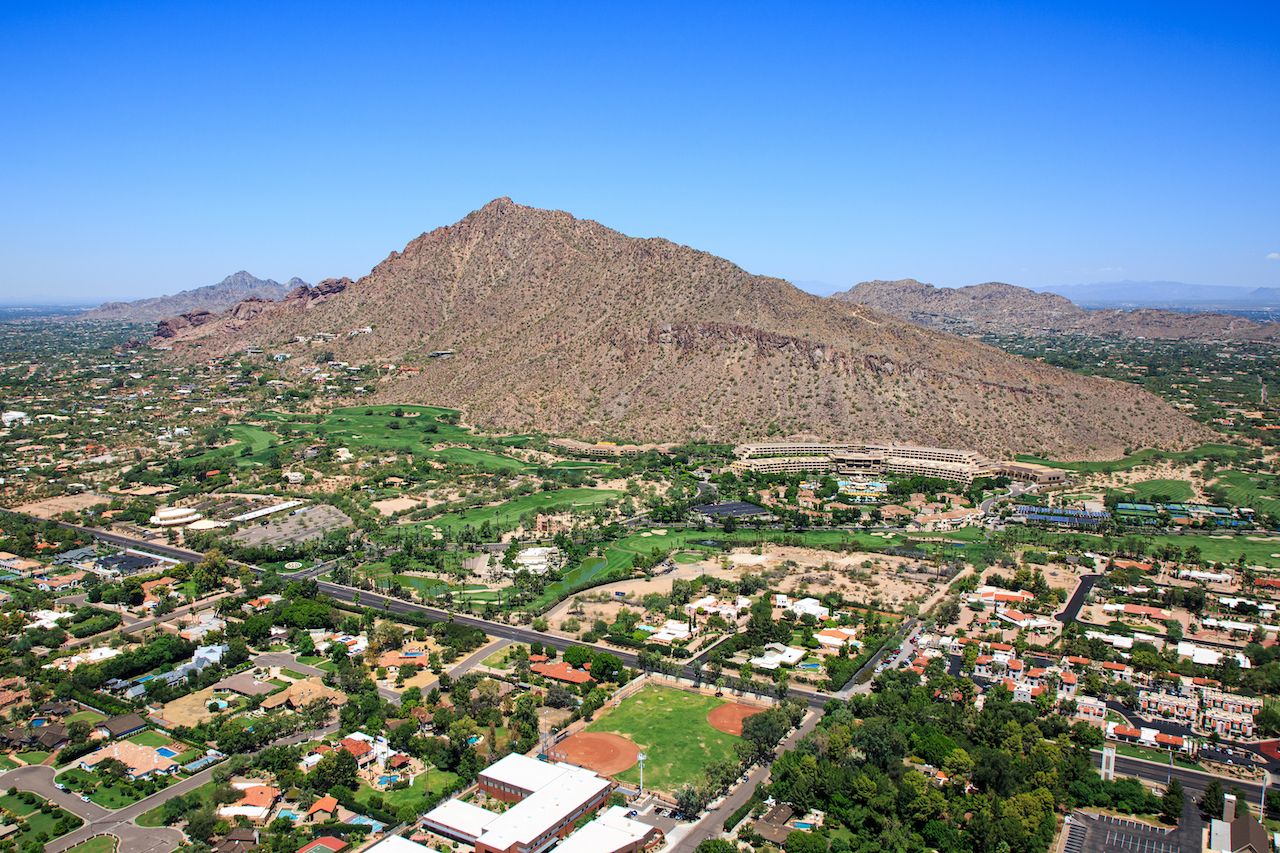
Photo: Tim Roberts Photography/Shutterstock
Arcadia — Named for Virgil’s Arcadia, a peaceful, pastoral area of ancient Greece, Arcadia of Phoenix was once home to hundreds of acres of citrus groves. Still filled with lemon and orange trees providing shade (and fruit) besides the largest and oldest eucalyptus trees in the city, the neighborhood feels like a desert oasis. Have an epicurean experience at La Grande Orange Grocery, a coffee and breakfast bar, pizzeria, and organic market all rolled into one. Down the street, Chelsea’s Kitchen offers great traditional Southwestern fare. But the most recognized landmark of Arcadia is Camelback Mountain where locals and visitors alike can hit the trails and enjoy some of the best views of Phoenix.
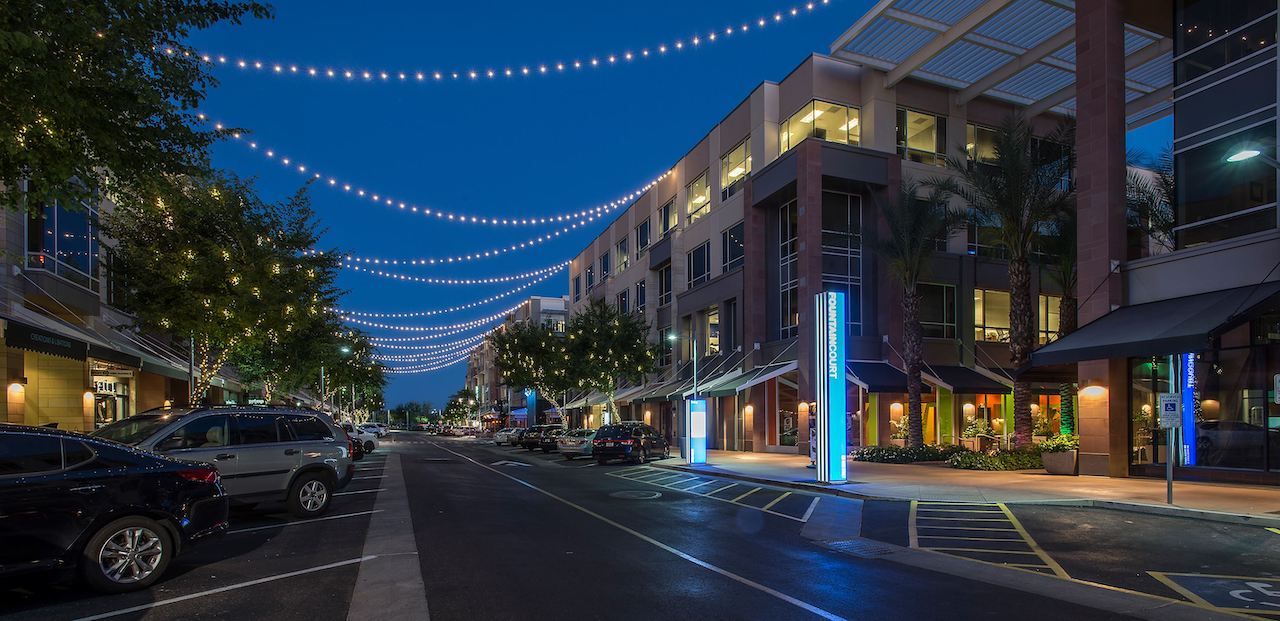
Photo: High Street AZ/Facebook
High Street — One of the most recent neighborhoods in Phoenix, High Street was built in the early 2000s as an urban oasis in the northern part of town, turning a patch of desert into a modern, hip neighborhood. Visitors can dine at the Modern Margarita, trying creations of traditional Mexican-American cuisine with a modern twist, and spend a night out at the Blue Martini, the upscale live local entertainment club and bar. Those who enjoy stand-up comedy can catch a show at the House of Comedy by some of the best comedians in the country.
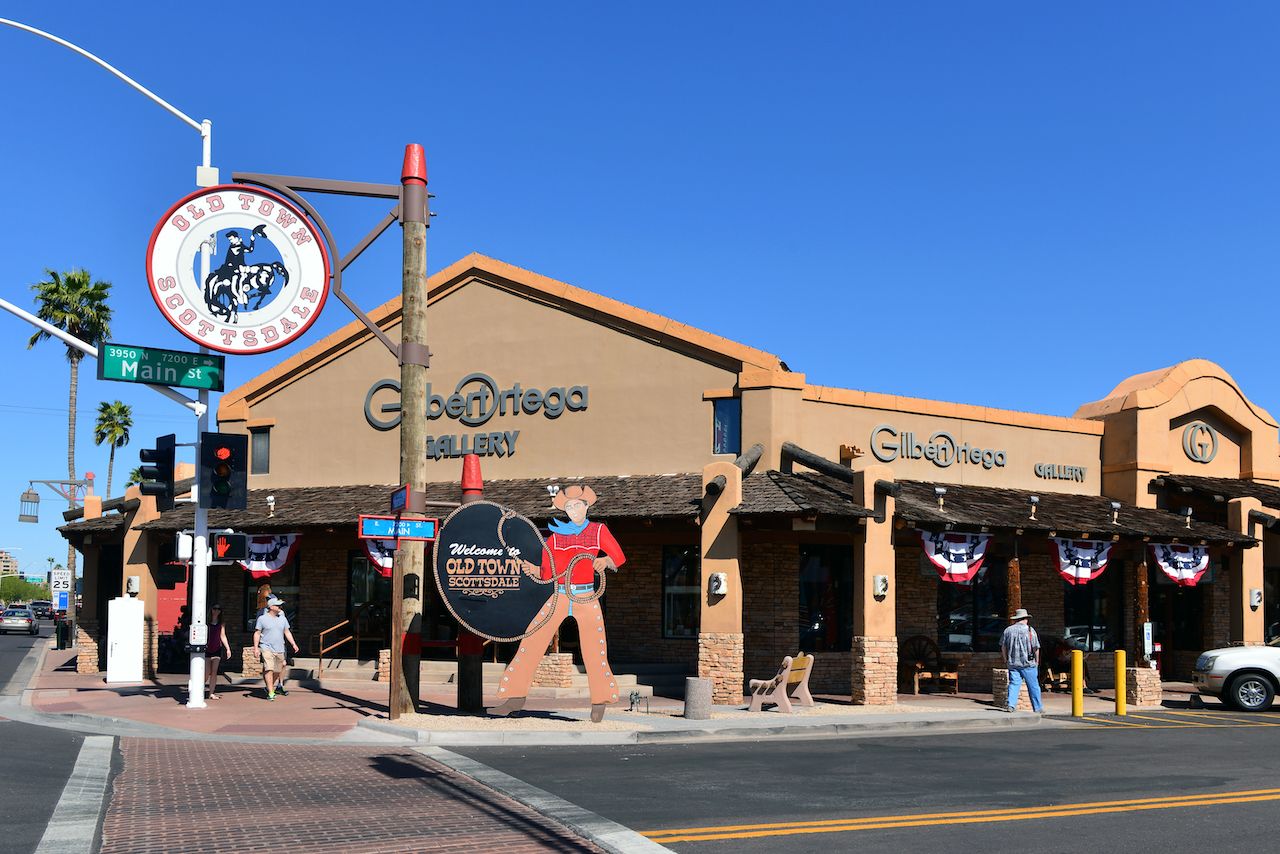
Photo: Paul McKinnon/Shutterstock
Old Town Scottsdale — Scottsdale is one of the most popular winter tourist destinations in the Southwest and city in its own right. Filled with boutique hotels and sprawling resorts, Scottsdale is also home to one of the most walkable neighborhoods in the Phoenix metropolitan area: Old Town Scottsdale. This small, historic area has restaurants, galleries, bars, and boutiques shops all within walking distance from each other, along with a beautiful Mission-style church (and adjoining restaurant and bar, The Mission). For a Southwestern dining experience, make your way to Old Town Tortilla Factory, a local favorite, housed in a historic adobe home. For a change of pace and a true Old West experience, the Rusty Spur Saloon offers old Western decor, live country music, and cowboy fare. For outdoor fun, hike or bike the Greenbelt Trail surrounding the neighborhood.
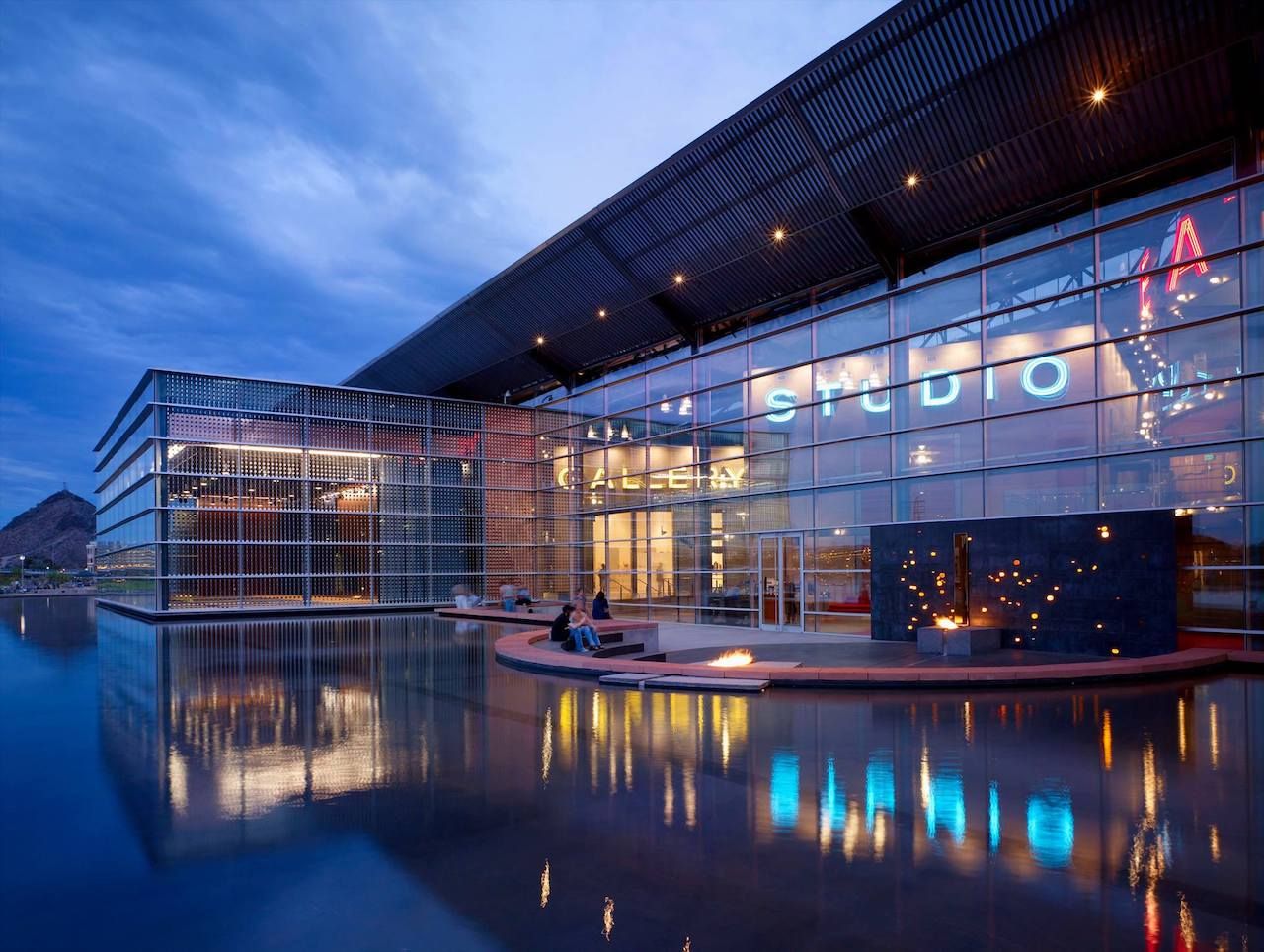
Photo: Tempe Center for the Arts/Facebook
Mill Avenue District — The architecturally distinct Mill Avenue District in Tempe, just south of the Arizona State University campus, has a laid-back vibe and is a good place for walking around and enjoying the scenery. A great addition to the neighborhood is the Tempe Tales, a public art installation of sculptures of jackrabbits scattered through the area. Tempe Town Lake offers a great place to relax in the city with walking and biking trails or boat rentals, and on its shore, the Tempe Center for the Arts showcases a stunning architecture. Casual restaurants and fast-food spots abound in the area, visitors can stop at any corner and find something to enjoy, but for a fine-dining experience, the award-winning House of Tricks is the best choice.
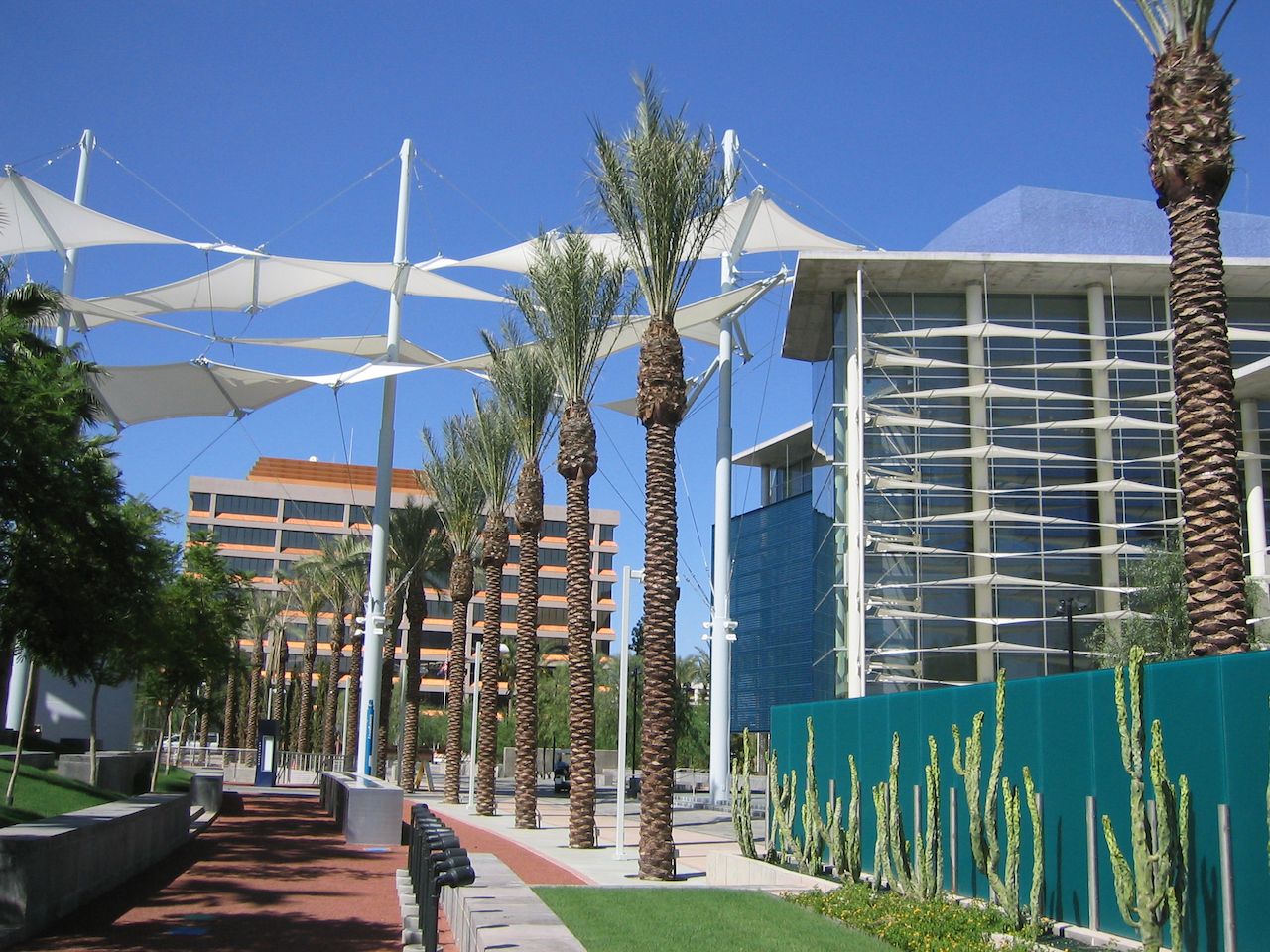
Photo: Germany Feng/Shutterstock
Mesa — A small city just east of Phoenix, Mesa has a welcoming, small-town feel and a strong sense of community. The downtown is home to an array of restaurants, independent shops, lively weekend street markets, and colorful murals. But for anyone interested in the farm half of farm-to-table dining, the real draw of Mesa is the agricultural stops along the Fresh Foodie Trail, such as Queen Creek Olive Mill, Superstition Dairy Farm, The Orange Patch, and Schnepf Farms (known for its amazing peaches). You can spend an entire day hopping from farm to farm, sampling produce, and getting an intimate look at how Phoenix gets all of those delicious ingredients for its restaurants. Mesa also makes for a great base for exploring the Superstition Wilderness.

Photo: The Farm at Agritopia/Facebook
Agritopia — An example of New Ruralism, Agritopia seems a world away from city life. This planned community in the town of Gilbert (and another official stop on the Mesa foodie trail) seeks to reintroduce the small-town feeling of the 1930s and ‘40s, featuring new homes built in the style of those decades and large areas for gardens and farm plots. A former 1920 bungalow houses C&J’s Antiques and Gardens, where visitors can find vintage treasures and enjoy the outdoor garden. Joe’s Real Barbeque has great Texas-style ribs, while Liberty Market serves wood-fired pizzas, grilled sandwiches, and a great selection of microbrews. But the best part of this community built around a farm is the offer of organic produce and the meals based on it served at Joe’s Farm Grill.
